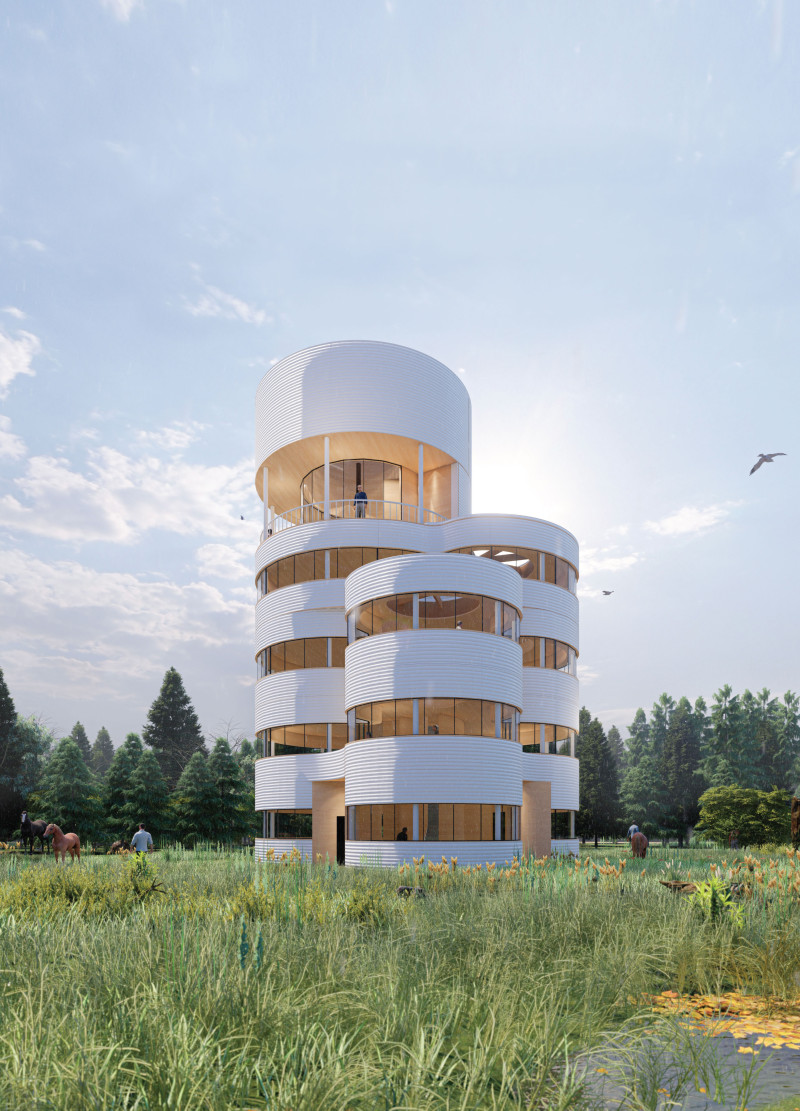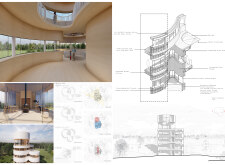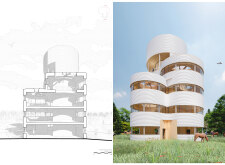5 key facts about this project
The Kurgi Observation Tower is located in the North Latvian Biosphere Reserve, designed to harmonize with the natural environment while reflecting local cultural themes. The tower serves as a space for both observation and interaction, inviting visitors to engage with the surrounding rural landscape. The design concept revolves around the idea of the site as a stage, where elements such as vegetation, barns, and horses contribute to an overarching narrative that connects the tower to its setting.
Architectural Form and Function
The tower takes cues from traditional farm silos, adopting a shape that resonates with the agricultural backdrop. This choice of form enhances the structure’s presence within the rural landscape. It serves not only as an observation point but also embodies the essence of local farming practices. Visitors are encouraged to immerse themselves in the experience, connecting with the environment as they explore the space.
Materiality and Structural Elements
The design employs a variety of materials that are both practical and reflective of the surrounding context. Circular hollow section steel columns offer strong support while allowing for a light aesthetic. A concrete slab with a metal deck serves as a dependable foundation. Inside, the use of suspended wooden ceilings and birch wall panels adds warmth to the space, creating an inviting atmosphere for those who enter.
Environmental Integration
Natural light plays a key role in the design, with double glazed windows strategically placed to capture scenic views. This consideration not only enhances the aesthetic appeal but also promotes energy efficiency. Light floods the observation areas, providing a bright and welcoming environment that helps visitors feel connected to the beauty beyond the walls.
Social Engagement
The observation tower aims to be more than just a structure; it seeks to foster community interaction. It provides a space for both locals and travelers to gather, facilitating an ongoing dialogue with the surrounding environment. This engagement adds cultural depth to the site, as the architectural design encourages exploration and appreciation of the regional landscape.
At the top of the tower, an open platform offers wide-ranging views of the biosphere, allowing visitors to take in the full expanse of the landscape. This elevation encourages a deeper connection to the local ecosystem, enriching the overall experience and understanding of the area.






















































